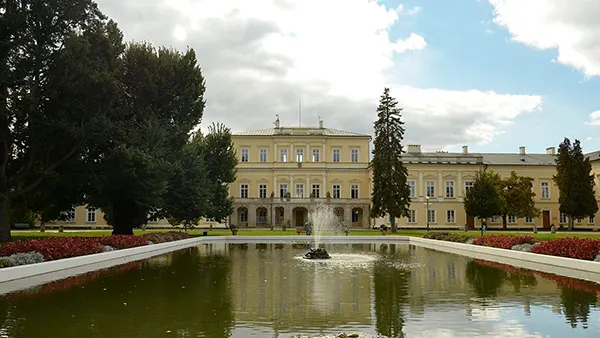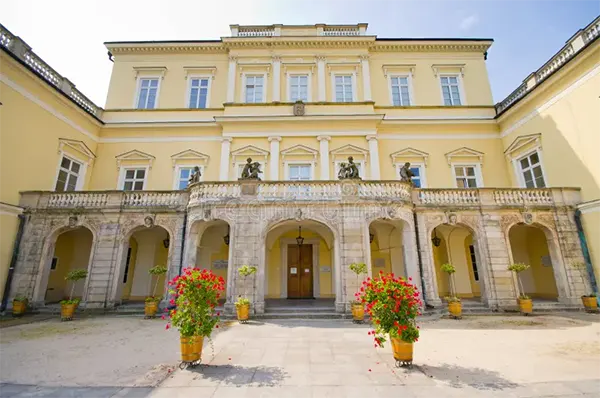
Palace of Izabela Czartoryska in Puławy: The Cradle of Polish Museology
The Palace of Izabela Czartoryska in Puławy holds a significant place in Poland’s cultural memory. Revered as the birthplace of Polish museology, it was here in the early 19th century that the first public museum in Poland was established. The palace, once a vibrant hub of Enlightenment thought and aristocratic heritage, continues to symbolise national pride and artistic endeavour.
The Role of Princess Izabela Czartoryska in Polish History
Izabela Czartoryska, a distinguished noblewoman and intellectual, played a vital role in shaping Poland’s cultural landscape during a time of political turmoil. Born into an influential family, she was a patron of the arts, a writer, and an advocate for Polish independence. Her passion for preserving national heritage led her to collect artefacts and historical relics that would become the core of the future museum.
After the partitions of Poland, Izabela envisioned Puławy not only as a private residence but also as a sanctuary for Polish identity. She opened her collection to the public in 1801, marking the birth of Poland’s first museum — the Temple of the Sibyl. Her efforts were pioneering, predating the establishment of many European museums of a similar kind.
Her legacy extends beyond museology. Czartoryska supported intellectuals, fostered educational projects, and documented the cultural losses Poland suffered under foreign rule. She remains a central figure in the preservation of national consciousness and the development of public access to cultural knowledge.
Preserving Memory Through Artefacts
The objects curated by Princess Czartoryska were not arbitrary. They were carefully selected symbols of Polish greatness — royal swords, portraits, ancient manuscripts, and relics from significant battles. These artefacts served a purpose: to tell the story of a nation’s resilience and inspire future generations.
Her vision was infused with patriotic sentiment and pedagogical intent. Each object in her collection was meant to educate, to remind, and to unite. In an era of lost sovereignty, her museum acted as a mirror of Poland’s soul, discreetly defiant in the face of occupation.
Through these items, Czartoryska gave voice to a silenced history. Many of the artefacts later formed part of the renowned Czartoryski Museum in Kraków, which continues her mission of cultural guardianship.
Architecture and the Garden-Park Ensemble
The palace itself is an exemplary blend of neoclassical elegance and Enlightenment ideals. Reconstructed after devastation in the 18th century, it embodies the architectural tastes of its era while integrating the personal vision of the Czartoryski family. Designed with symmetry and grandeur, its interiors were tailored to both private life and public enlightenment.
The surrounding park, inspired by English landscape gardens, was designed not merely for beauty but for contemplation. Pathways led visitors through symbolic monuments, such as the Temple of the Sibyl and the Gothic House, each contributing to the palace’s narrative of national memory and philosophical reflection.
This harmonious ensemble of architecture and nature reflects the Enlightenment’s belief in reason, order, and the power of aesthetics to uplift the human spirit. The estate was not just a noble residence but a cultural statement — an open-air testament to identity and intellect.
Gothic House and Temple of the Sibyl
The Temple of the Sibyl, built in 1801, was the first building in Poland conceived purely as a museum space. Modelled after Roman antiquity, it housed Izabela’s historical collections and conveyed her message of enduring national spirit through art and relics.
Nearby, the Gothic House displayed further artefacts in a romanticised medieval setting. It complemented the Temple by expanding the visual narrative of Poland’s past, echoing the sentiments of Romantic nationalism that were gaining momentum across Europe.
These structures were not merely decorative. They embodied a museological philosophy — that architecture, setting, and artefact together can teach history and evoke emotion. The buildings endure as symbols of that pioneering vision.

The Palace as a Cultural Centre of the Enlightenment
In the early 19th century, Puławy emerged as a cultural epicentre. It welcomed writers, philosophers, scientists, and statesmen. Thanks to Princess Czartoryska’s initiatives, the palace became a salon of progressive thought, where art and politics intermingled in the pursuit of national rebirth.
Among its guests were literary giants like Julian Ursyn Niemcewicz and historical figures such as Prince Adam Jerzy Czartoryski. Their debates and publications influenced public opinion and fuelled the intellectual resistance to foreign domination. The palace thus served as both haven and catalyst.
Puławy’s role in the Enlightenment movement was not coincidental. It embodied the ideals of education, cultural continuity, and civic responsibility. It showcased how aristocratic privilege could be leveraged for public good and how cultural institutions could nurture patriotism through scholarship and art.
Education, Patriotism, and Cultural Reform
The educational mission of the Czartoryski family extended beyond museum curation. They supported schools, sponsored printing presses, and cultivated a sense of civic identity among Poles. The Palace library and archives were open to researchers and political activists.
Izabela’s efforts reflected a wider Enlightenment trend: transforming elite spaces into centres of collective knowledge. Puławy was a rare example of a noble residence becoming a civic asset — not through revolution, but through voluntary cultural reform.
This transformation set a precedent for future public institutions in Poland. It demonstrated how national values could be preserved and promoted even in times of political suppression, through creativity, resilience, and strategic cultural investment.
Popular articles
-
 Moszna Castle: A Fairytale Landmark of Lower Silesia
Moszna Castle: A Fairytale Landmark of Lower SilesiaMoszna Castle stands as one of the most recognisable historical …
-
 Roztocze — the Green Pearl of Eastern Poland
Roztocze — the Green Pearl of Eastern PolandRoztocze, a scenic region stretching across the Lublin Voivodeship in …
-
 Kraków Valleys — Picturesque Gorges, Rocks and Walking Trails near Kraków
Kraków Valleys — Picturesque Gorges, Rocks and Walking Trails near KrakówThe Kraków Valleys, known in Polish as Dolinki Krakowskie, are …
